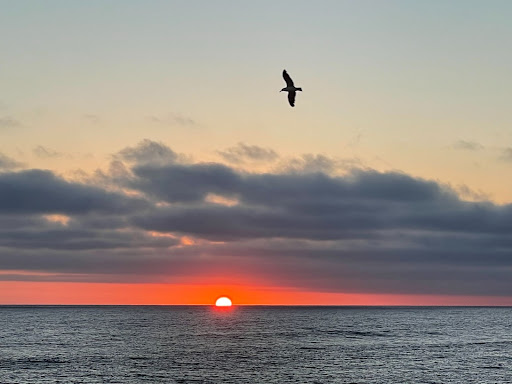
August in the Natural Garden
The days are being drawn out one after another, like a cord being stretched to its maximum length, and a shorter cord is employed to measure the nights. In our southern California summers, we get 14-16 hours of useful sunlight, usually accompanied by heat. Following the old adage, “Make hay while the sun shines,” native plants, birds, pollinators, and all manner of living things, (including us), are very busy through each long day, and sometimes we feel tired at the end. Read on to learn how to invigorate both your garden and your spirit, in the bright light of each long, hot day.
Current events, history, review, and notes
The rainless period between May and October is never called a drought. The weather pattern over the last 30 years, plus the scant rains over the last three, qualify in the true definition of drought. Our water resources and reserves are under more pressure than ever for three reasons: a regional drought (weather), warmer temperatures (climate), and a burgeoning population (people). The weather may someday change and bring more rainfall, but the factors of a warmer climate and more people will be ever present and our limited water resources will always be a major issue affecting our lifestyle here in the arid southwest. We’re long overdue for a substantial shift in our approach to outdoor green space, and changes are actually underway… better late than never.
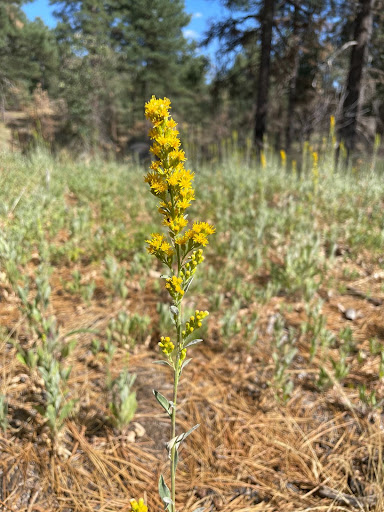
Watering
If you have been reading these monthly newsletters regularly, you have this memorized:
Hand watering – Garden hose, soft rain nozzle, for individual plants or small areas. All new plantings and recently installed plants. A hose puts out between 4-5 gallons per minute. The goal is to thoroughly soak the root ball and the soil around it. On average, you want to put 20-30 gallons of water on a plant that is in the process of getting established. Stand in one spot for 4-6 minutes. Let the water soak in.
Deep Soak – Garden hose, hose end sprinkler, but most likely a sprinkler system for the entire garden area. Dry season May through October plus any extended dry spell in winter if needed. The goal is to apply the equivalent of 1-1.5” precipitation and make sure it ALL soaks in. With a sprinkler system, you can do this by watering during a cooler overcast few days, early in the morning, and running the sprinkler for 20-40 minutes per day for three consecutive days (totaling 1-2 hours), starting around 6:00 am each day. You are watering the root zone and the water is penetrating 14-20” deep. You do a Deep Soak approximately every 4-6 weeks (or less in well established coastal gardens) in summer resulting in 3-6 Deep Soaks per year.
Refreshing Sprinkles – Garden hose with a spray pistol attachment, for the entire garden. Summer. In late afternoon / early evening you spray down the whole garden for around 5-10 minutes, 2-3 (or more) times per week, at the very end of a hot day (around 7:00 pm) is OK. The goal is to wet the leaves and the surface of the soil to cool everything off. You are not watering the root zone. You do a Refreshing Sprinkle a few times a week. Don’t forget to turn the water straight overhead so you can take a quick shower and feel what the plants are feeling.
Spot Watering – Garden hose or hose end mini-sprinkler. Any time of year, especially summer. Most yards have problem areas that are sunny or windy or the soil is funky or the slope doesn’t allow good water penetration or the plants are crowded or the sprinkler system misses it. The goal is to soak the ground. Whatever the cause, be sure to give these areas special attention with an occasional Spot Watering, watering by hand, or setting the hose at a trickle for a few hours or using a mini (low-volume) sprinkler.
Not Watering – The only way to truly save water is to not water. You might be surprised how efficient native plants are at taking up and conserving water through the long, hot, dry days of summer. The goal is to maintain optimal soil moisture at a depth of 8-20” (where the roots are) and keep the leaves fresh and clean. For natives, this will include long periods when you are simply Not Watering. Many established natural gardens in southern California receive no supplemental irrigation, and the owners tend to be quite proud of that.
Related to Watering
Approximate supplemental watering needs per year, southern California
Turfgrass = 40-60 inches
“Ornamental” flowers and shrubs = 30-35 inches
Citrus orchard = 24-30 inches
“Drought tolerant” landscaping = 15-20 inches
“Succulents” = 15-20 inches (that’s what they’re getting anyway)
California native plant gardens = 5-8 inches
Our natural areas = 0 inches, nobody waters them
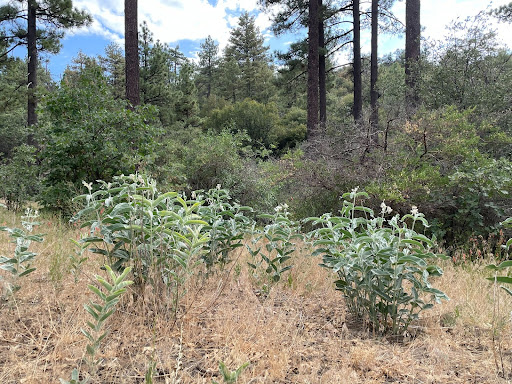
Asclepias eriocarpa, milkweed. The leaves are summer food for monarch butterfly larvae.
Pruning
No pruning necessary in July/August. Remove dead or dying branches, deadhead a few dry flowers, cut branches for access, etc. Wait for cooler weather to do major pruning.
Weeding
If you are watering properly, weeds should be of little concern this month, as you have hoed out all the winter weeds and any summer weeds are solidly under control. Right?
Mulching/Top Dress
Do not bring strange foreign unknown mystery organic material onto the surface of your soil ever, but especially not in hot weather. See 2022 June in the Natural Garden for more details.
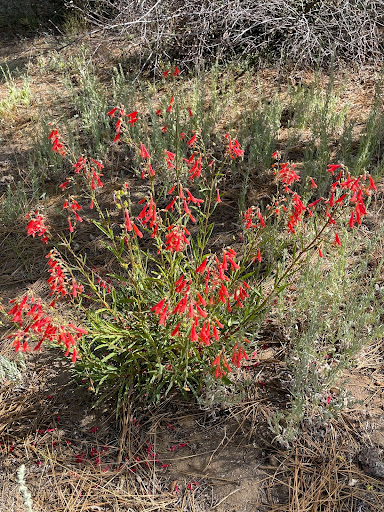
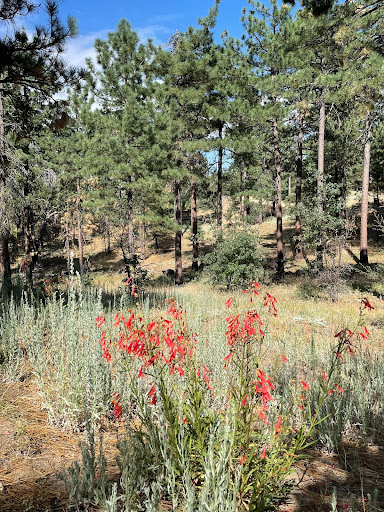
Feeding
No feeding in summer.
Troubleshooting – Varmints, Pests and Diseases
See 2022 June in the Natural Garden.
Annual Wildflowers
Dream about the seed you are going to sow in November, and the flowers you’ll see in March.
Adding New Plants
Here and there, now and then. A few plants for pots. You can plant in the shade, You’re safe on the coast. Individual plants that you’ll promise to watch carefully. For large scale plantings, hold off a couple months, as late September, and for sure October are easier. But please keep coming to Tree of Life or we’ll get very lonely. Visit, plan, photograph, pick up a few books, chat, but hold off on major plantings. And pray our cash reserves hold til October.
Phytophilia
Literally translated “brotherly love of plants,” this section in our monthly newsletter specifically addresses the “sixth sense” we can develop in our relationship to plants in general, and specifically to plants in our gardens. This month, we recognize provision and generosity. See how your humble assemblage of natives gives sustenance to all manner of God’s creatures; birds, insects, reptiles, mammalian friends, and allies of every sort, providing shelter, cover, nectar, berries, leaf-food, soil health, and all the basics for the seemingly unnoticed web of life. Your little private space is making a significant contribution to biodiversity in your region. Now to get all your neighbors on board so the impact will become even more visible.
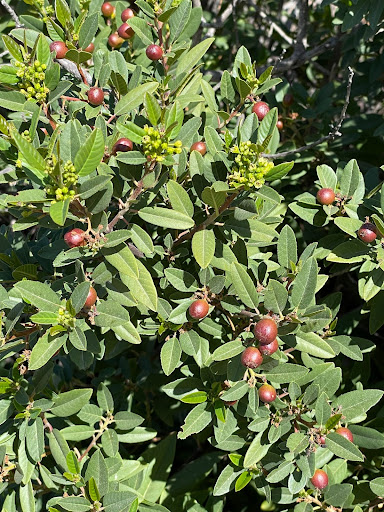
Important Review
The days are long and hot
Put the right amount of water on the right spot by the right method
No pruning, mulching, or feeding
Pest control is easy
Plant this fall
Provision and generosity
Less is more
Engage
A midsummer hike (or car trip) to the hills, mountains, or deserts (stay hydrated) will give you insights and thoughts you can apply in tending your garden. Don’t rush it. If you can sit in one spot for a while (lunchtime again?) or simply stop all activity to take in the beauty and tranquility of the natural world around you, you will see that our native ecosystems do well every season, even the annual hot one. Take your time. You may notice new growth on various shrubs, small understory plants still flowering, and you can study tidy manzanitas apparently loving the summer sun. Majestic oaks dominate with attitudes unchanged over centuries. You’ll notice dry soil that seems content in waiting, and distant vistas attesting to the hard fact that the entire region is parched… yet chock full of life. You may perceive a stillness in bird and animal life in the heat of the day compared to their hyperactivity in the early and late hours.
Can you linger in the same spot until evening, or or even stay overnight? It won’t get cold. With the air at least moving in the afternoon breeze, it will feel cooler. Now your nearby shadows will close in to offer an air of confidence; this place will soon be taking a night’s rest. The distant shadows will play tricks on your depth perception. Far away land forms seem close, and they beckon you to visit them on some future adventure.
Arriving home to your own natural garden, your miniature nature-representation tended so attentively by you, you’ll have many new clues regarding summer care. Less is more. Leave it alone. Aside from the rare Deep Soak and occasional Refreshing Sprinkle, there’s not much to do in your garden except to sit and appreciate it.
Despite a long season of extreme heat every day, (in fact because of it), you will find that nature not only employs methods to “endure,” but you’ll appreciate her facility to “thrive.” The same principle applies to your natural garden.
We made it! And we’re still making it!
From the JULY/AUGUST Natural Garden,
Mike Evans
Questions? Help is just one call or one email away. Call (949) 728-0685 or email (with pictures if you like) our special helpline: gardenhelp@californianativeplants.com